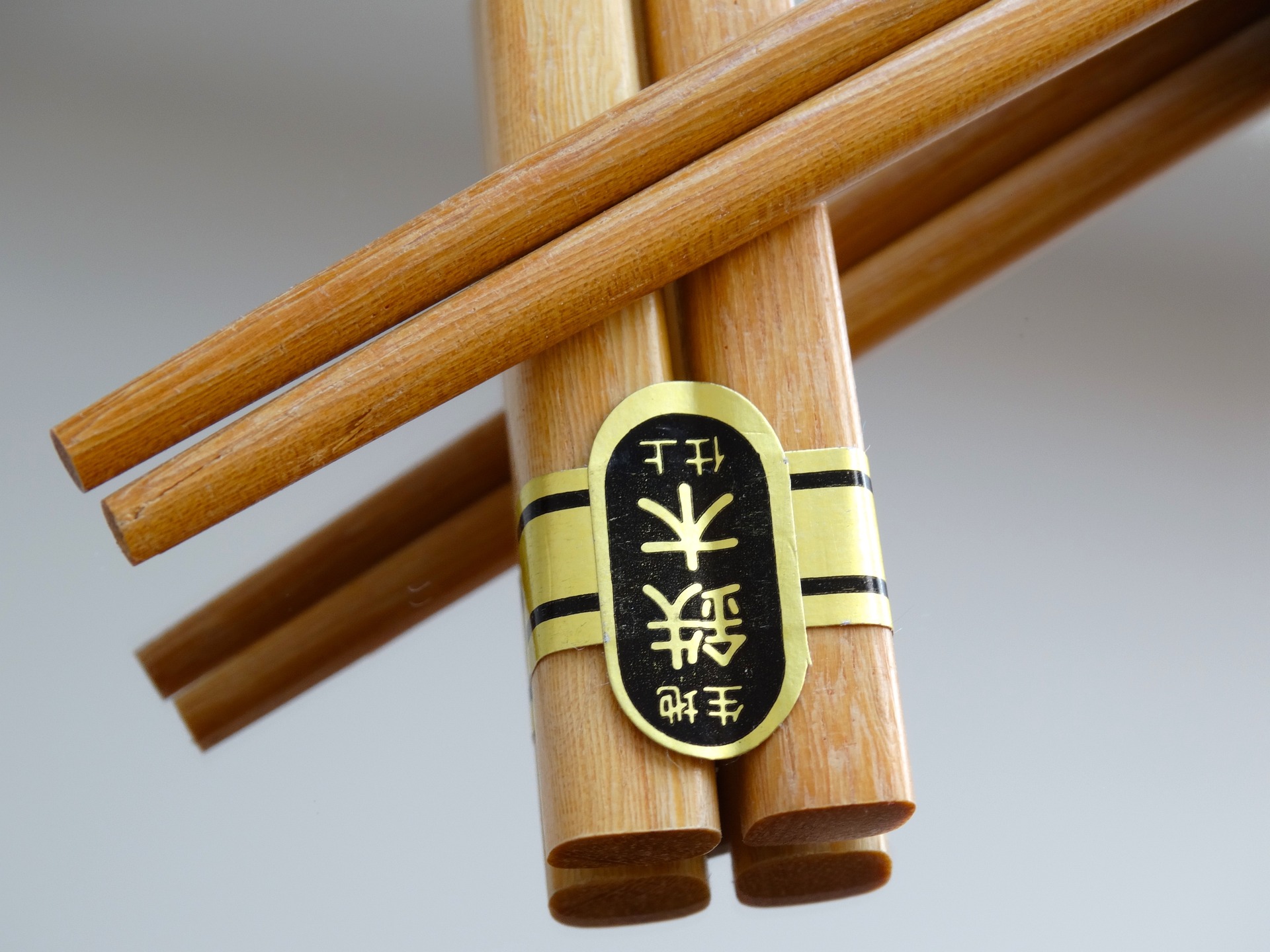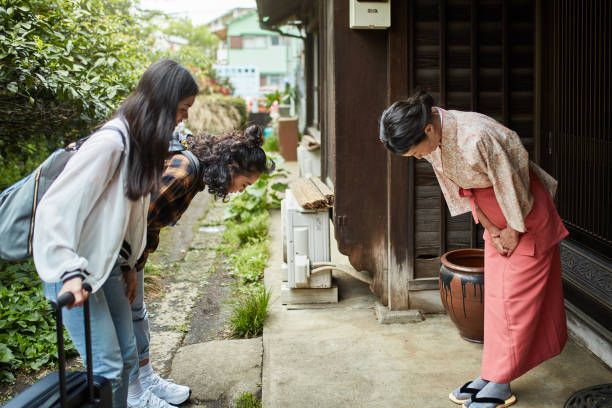
Intro
In the world of gastronomy, mastering the art of how to hold chopsticks and how to use chopsticks can open up a whole new culinary experience.
Not just a utensil, chopsticks hold a significant place in Asian cultures and come with their own set of etiquette and rules.

The Basics of Chopsticks
Chopsticks have a rich and extensive history that dates back thousands of years.
Their origin can be traced to ancient China, and over time, they were adopted by other Asian countries including Japan, Korea, and Vietnam.
These traditional utensils are not only a key component of these countries’ dining experiences, but also serve as a symbol of their cultures and traditions.
Crafted from various materials, chopsticks come in many forms.
The classic design is typically made from bamboo or wood due to their lightweight nature and organic feel.
However, in modern times, chopsticks made from plastic and stainless steel have also become commonplace.
Each type of chopstick offers a unique dining experience, from the warm, earthy touch of bamboo, to the sleek, modern feel of stainless steel.
But beyond their function as eating tools, chopsticks are an embodiment of etiquette, culture, and aesthetics.
The way you hold and use chopsticks reflects not only your dining skills, but also your understanding and respect for the cultural nuances of the countries that use them.
Before exploring how to hold chopsticks, it’s important to remember that patience and practice are key.
This age-old tradition wasn’t mastered overnight.
Each individual’s experience with chopsticks is unique, just like the journey of these utensils from ancient China to the modern dining table. Now that you know the basics, let’s delve into the nitty-gritty of how to hold chopsticks.

Step-By-Step Guide on How to Hold Chopsticks
For the first-time chopstick user, here’s a simple guide to help you learn the art of holding chopsticks.
- Start by resting one chopstick in the crook of your hand, nestled snugly between your thumb and index finger, and propped against the base of your ring finger.
This chopstick forms the base and remains stationary. - The second chopstick is controlled by the thumb, index, and middle finger and moves almost like a pencil in your hand.
Place it so it rests comfortably on your middle finger, positioned between the tip of your thumb and the side of your index finger. - Now, ensure that the tips of both chopsticks align perfectly and are not crossed.
This helps maintain control while picking up food. - Practice the seesaw movement, where the upper chopstick moves while the lower one stays put.
Initially, you might find it challenging to keep the chopsticks from crossing or slipping. - To master how to hold chopsticks, try picking up different kinds of food items, varying in size and texture.
This might seem difficult at first but remember, with practice comes perfection.
Soon, you’ll be able to lift everything, from a single grain of rice to a slippery noodle, with nothing but your chopsticks.
Remember, the key to holding chopsticks is maintaining a firm, yet gentle grip.
Too tight, and you might find it difficult to maneuver the upper chopstick; too loose, and you’ll struggle with control. Keep practicing, adjusting your grip and finger movements as you go along, and in no time, you’ll have mastered the art of holding chopsticks.
As you navigate this new dining skill, keep in mind the cultural significance and respect tied to this utensil. Enjoy the journey as you explore new culinary experiences and traditions through the art of using chopsticks.

Mastering the Art of How to Use Chopsticks
Once you’ve gotten the hang of how to hold chopsticks, the next natural progression is learning to use them efficiently.
The art of using chopsticks is all about finesse and precision.
The movement should come predominantly from your fingers, specifically the thumb, index, and middle finger.
These digits control the upper chopstick, creating a scissor-like movement for picking up food.
In this phase of mastering how to use chopsticks, it’s crucial to remember that the lower chopstick stays stationary, anchored in place by your ring finger and the base of your thumb.
Think of this chopstick as the foundation, providing stability, while the upper chopstick does the majority of the work, moving in a seesaw-like motion.
Your thumb plays a pivotal role in this process. It acts as the hinge, allowing the upper chopstick to move up and down, and also holds the lower chopstick in place.
The index and middle fingers work in tandem with the thumb, offering additional support and control to the upper chopstick.
It’s worth noting that using chopsticks isn’t about large hand or arm movements.
It’s a subtle skill, almost like a dance of the fingers, a blend of dexterity and coordination that allows you to pick up, hold, and maneuver food with ease. This is especially true when trying to pick up slippery or small items like noodles or grains of rice.
As you refine your chopstick skills, always remember the cultural implications tied to this utensil.
As you explore the cuisine of different Asian cultures, mastering how to use chopsticks will not only enhance your dining experience but will also offer a greater appreciation and respect for the traditions behind this ancient utensil.
Keep in mind that this process requires patience and practice. But once you’ve learned the proper technique, using chopsticks will become second nature, transforming every meal into a more immersive and satisfying culinary experience.

How People Correctly Hold Chopsticks
Achieving the correct technique for holding chopsticks is a delightful blend of delicacy and firmness.
The harmony between the stationary lower chopstick and the dynamic upper chopstick results in a pivot-like action, the secret behind the precise control.
If you have ever watched those proficient in the art of chopsticks, you would notice the apparent effortlessness with which they navigate through their meal, picking up anything from a single grain of rice to a tricky piece of sushi.
It’s fascinating to observe the finesse, the subtle twist and tilt of the fingers, and the gentle squeeze that keeps the food securely gripped. It’s all about maintaining the perfect balance and pressure – too much or too little can disrupt the elegant choreography of this ancient dining practice.
But most importantly, correct usage of chopsticks reflects an appreciation and respect for the rich traditions tied to this humble utensil.
It’s more than an eating skill; it’s a harmonious fusion of culture, history, and etiquette, all rolled into one.

The Common Mistakes in Holding Chopsticks
When venturing into the world of chopsticks, it’s not uncommon for beginners to encounter a few stumbling blocks. This journey, filled with trial and error, often involves a series of common missteps.
A prevalent mistake is holding the chopsticks either too tightly or too loosely.
An overly tight grip can restrict the movement of the upper chopstick, making it difficult to grasp the food securely.
On the other hand, a loose hold may result in chopsticks slipping or dropping food due to a lack of control.
Finding the right balance in your grip is essential for precision and control.
Another common mistake involves an excessive amount of hand or arm movement.
The art of using chopsticks is subtle and requires finesse rather than force.
It primarily involves the fingers, especially the thumb, index, and middle finger, which control the upper chopstick’s movement.
Overly large hand or arm movements can disrupt the delicate balance required to effectively use chopsticks.
Crossing the tips of the chopsticks is another error often made by beginners.
This misstep can make it challenging to pick up food and could lead to the chopsticks slipping out of your hand.
Remember, the tips of the chopsticks should always be parallel to each other to ensure optimal control.
Lastly; holding the chopsticks with completely wrong fingers.
Holding chopsticks proves difficult, of course, if you hold them with the wrong fingers.
One chopstick should be lying in the crook of your hand, while the other chopstick is being hold and moved by your thumb, index and middle finger.
In the quest to master chopsticks, it’s easy to overlook these missteps.
Yet, avoiding these common errors can drastically improve your chopstick technique and dining experience.
As you continue practicing, strive to correct these mistakes to fully embrace the cultural and culinary essence of chopsticks.
After all, the road to mastering any skill is paved with patience, practice, and persistent refinement.
Remember, it’s not just about eating; it’s about immersing yourself in a rich tradition that dates back thousands of years.

Chopstick Etiquette
While the technical skill of how to hold chopsticks and how to use chopsticks is important, there’s another facet of chopstick culture that’s equally vital – etiquette. Following the correct etiquette demonstrates respect for the cultural nuances surrounding this age-old dining tradition.
One of the cardinal rules is to never stick chopsticks vertically into a bowl of rice.
This act mimics a funeral ritual in Asian cultures and is considered inauspicious. When not in use, it’s recommended to lay your chopsticks flat on the chopstick rest or horizontally across the edge of your bowl.
Using chopsticks to point at people or things is another faux pas.
Just as it’s impolite to point with fingers, the same rule applies to chopsticks. Additionally, avoid using chopsticks as cutlery to cut or tear food.
They are designed to pick up food delicately, not slice or dissect it.
Transferring food directly from one pair of chopsticks to another is also a big no-no.
This action is reminiscent of a Japanese funeral ritual and is considered highly disrespectful. If you wish to share food, it’s best to use the serving utensils provided.
Spearing food with chopsticks is viewed as bad manners.
Despite the temptation to do so, especially with tricky items like slippery noodles or large pieces of sushi, the art of chopsticks lies in the skillful maneuvering to pick up food, not impale it.
Lastly, refrain from using chopsticks to move bowls or plates around the table.
They are designed specifically for eating, not for shifting tableware.
Adhering to these etiquette guidelines while mastering how to hold chopsticks and how to use chopsticks is an essential part of fully appreciating the tradition and culture behind this unique dining practice.
Remember, each meal is an opportunity to show your respect for the culinary traditions and customs of Asian cultures.

TLDR
The art of learning how to hold chopsticks and how to use chopsticks involves more than mastering a new dining skill.
It’s a journey into the rich traditions and cultural nuances of Asian countries.
Mistakes are part of the learning process but avoiding common pitfalls can significantly enhance your chopstick technique and your overall dining experience.
Paying close attention to chopstick etiquette demonstrates respect for the customs tied to this ancient utensil.
With patience and consistent practice, you can perfect the skill of using chopsticks, thus adding an authentic touch to every Asian culinary adventure.

If you are Interested in Asian Culture:
Learn how to say “Hello” in Japanese
